
This month we conclude the exploration of the new sake arrivals at Sake Online. I hope you have enjoyed discovering the new tastes and aromas that have been presented in this new range.
In this issue of Sipping with the Sake Master I would like to introduce you to Tozai Nigori Kirino Sasayaki Voices in the Mist, Tozai Chie no Izumi Wells of Wisdom Ginjo & Nanbu Bijin Ancient Pillars Junmai Daiginjo.
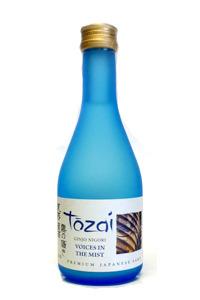 |
Tozai Nigori Kirino Sasayaki Voices in the Mist
Daimon Shuzo Nihonshu-do: 5 Made with a unique blend of 3 rices: Yamada Nishiki, Gohyakumangoku, and Nihonbare and milled an additional 5% over the grade minimum to create a dry cloudy sake with beautiful finesse. Aroma profile: Prominent overipe banana, pear and citrus notes |
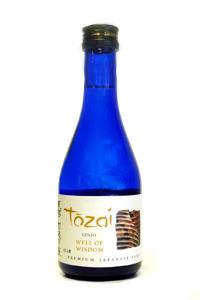 |
Tozai Chie no Izumi Wells of Wisdom Ginjo
Nihonshu-do: 5.5 Crafted with pure, natural spring water from this family brewery nestled at the base of Osaka’s scenic Ikoma mountains. Aroma profile: Light rice laden nose with a touch of honey |
Tozai hails from Daimon Shuzo (also know as Sakahan Brewery), the parent company that produces Mukune, “Root Of Innocence”, another great sake we have introduced on Sake Online. Daimon brewery is one of a very few, but growing number of breweries where the brewery owner also plays the role of skilled Toji (master brewer). Yasutaka Daimon, whose brewery has been in the family for six generations, feels this is the ultimate way to control quality of the entire process – from raw ingredient procurement to bottling. The Daimon brewery is also blessed with its location in the shadows of the Katano mountains which allows Yasutaka to pipe water rich in minerals directly from the underground springs. Tozai represents a unique collaboration between a sixth-generation Japanese sake brewery—Daimon Shuzo, a prominent Kyoto-based American artist—Daniel Kelly, and America’s leading importer of chilled, premium, artisanal Japanese sake—Vine Connections. Tozai means “East-West” in Japanese and evokes the spirit of the alliance that created this special sake. We have combined our vast experience, skills, and passions to create a boutique sake that will thrill your senses of smell, taste, and sight. Drink from the Well.
SAKAHAN HISTORY
• Mukune Brand Premium Sake is made by Daimon Brewery
• Mukune sake is named after an old Osaka village called MUKUNE.
• Daimon Brewery is also known as SAKAHAN Brewery
• Daimon also produces Tozai
♦ Kura History ♦
Daimon Shuzo (aka Sakahan), founded in 1826, is located at the foot of the scenic Ikoma 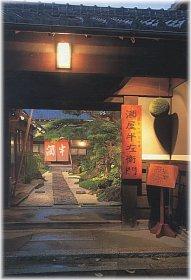 mountain range in Katano City.
mountain range in Katano City.
Katano occupies a well-known spot in Japanese history. During the Heian era (over 1000 years ago), the aristocracy of Western Japan flocked to Katano to enjoy the very beautiful scenery that abounded there including lovely cherry blossoms in the spring and the verdant surrounding mountains.
Hunting was the main sport of the gentry and cotton seed oil and silk production were the usual industries of the residents.
Sake production began during the Edo period, but of the several sake-producing firms originally present, only Daimon Shuzo still remains.
♦ The Sake ♦
“The sake we make is known by the brand name Rikyubai and also by the name Mukune. Our sake is, in general, full flavored but mellow and balanced. Our higher grades of sake are often very lightly laced with fruit essences such as pear and peach. A nice acidity suffuses the flavor, allowing it to spread out evenly.”
♦ Size and Special Characteristics ♦
Daimon Shuzo produces about 500 “koku.” As one koku (the traditional measure of sake in Japan) is 180 liters, about 90 kiloliters is brewed here each year, in the traditional brewing season which runs from October to May. This is fairly small by industry standards, but allows Daimon Shuzo to strictly control the quality and style of the sake they produce.
♦ Current Director / Owner / Master Brewer ♦
 << Photo: Current Director, Yasutaka Daimon
<< Photo: Current Director, Yasutaka Daimon
Yasutaka Daimon is the sixth-generation director of Daimon Shuzo. He notes that in Japan there has been a recent trend away from sake and toward other beverages like wine.
“We take great pride in our traditional product and I feel that the distinctive taste and manner of drinking sake is inherently tied to the Japanese culture and spirit. I promise to endeavor to continue to produce our high-quality sake with the hope that future generations of all people can enjoy and savor this fine and relaxing style of drinking sake.”
♦ Notable Quotes from Master Daimon ♦
“The most important factor involved with producing good sake is the water supply. We have been blessed with a natural spring providing water which is rich in minerals pure enough to be used in the production of excellent sake. Many people have shown an interest in our water alone, preferring to use it when they do the Japanese tea ceremony, or even for healthy consumption at home in regular tea and coffee. We have also been growing our own Yamada Nishiki rice, the king of sake rice, in cooperation with local rice growers, thus keeping us close to the community in yet another way.”
● ● ● ● ● ● ● ● ● ● ● ● ● ● ● ● ● ● ● ● ● ● ● ● ● ● ● ● ● ● ● ● ● ● ● ● ● ● ● ●
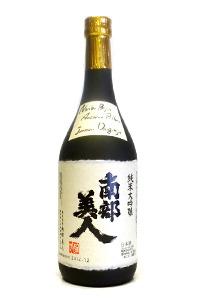 |
Nanbu Bijin Ancient Pillars Junmai Daiginjo
Nanbu Bijin Nihonshu-do +3 Brewed by a famous veteran master brewer with more than 35 years of experience in one of the coldest and snowiest regions of Japan. Aroma profile: Highly aromatic nose of candy & friut loops |
♦ Kura History ♦
 Nanbu Bijin Brewery (formerly known as Kuji Shuzo) is located in northern Japan’s Ninohe City, an area long referred to as “Nanbu no Kuni.” It is an area blessed with lush and beautiful natural reserves, fine water, two national parks, and a lake. We were established in 1902, but at first were only a sake retailer. In 1915 we acquired the necessary licenses and began to brew sake. Our facilities lie on what was once known as the Okumura Kaido, old National Route Number 4. The all-glass front of the main building gives the proper impression of a shop, while the kura (brewery building) behind it is a gorgeous, all-wood, traditional structure. Its ancient, thick pillars and their shining dark color convey the long history of the place.
Nanbu Bijin Brewery (formerly known as Kuji Shuzo) is located in northern Japan’s Ninohe City, an area long referred to as “Nanbu no Kuni.” It is an area blessed with lush and beautiful natural reserves, fine water, two national parks, and a lake. We were established in 1902, but at first were only a sake retailer. In 1915 we acquired the necessary licenses and began to brew sake. Our facilities lie on what was once known as the Okumura Kaido, old National Route Number 4. The all-glass front of the main building gives the proper impression of a shop, while the kura (brewery building) behind it is a gorgeous, all-wood, traditional structure. Its ancient, thick pillars and their shining dark color convey the long history of the place.
♦ The Sake ♦
In 1951, we decided to stop making the sweet sake so common back then, a style with 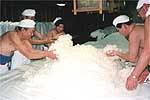 plenty of off-flavors. Instead, we decided to brew “clean and beautiful” sake. Hence, we created the Nanbu Bijin brand name to personify our sake. Nanbu stands for the region, and Bijin (meaning beautiful woman) for the delicate, light, and clean nature of our sake. Our sake is brewed with medium-hard water that is purified naturally as it courses through the mountain rock on its way to the sea. We use Hito-mebore, Toyonishiki and Sasanishiki sake rice and of course, our sake is brewed by a Nanbu-area toji.
plenty of off-flavors. Instead, we decided to brew “clean and beautiful” sake. Hence, we created the Nanbu Bijin brand name to personify our sake. Nanbu stands for the region, and Bijin (meaning beautiful woman) for the delicate, light, and clean nature of our sake. Our sake is brewed with medium-hard water that is purified naturally as it courses through the mountain rock on its way to the sea. We use Hito-mebore, Toyonishiki and Sasanishiki sake rice and of course, our sake is brewed by a Nanbu-area toji.
♦ The People ♦

 << Photo: Kuramoto Kuji Hideo and Son, Kuji Kosuke
<< Photo: Kuramoto Kuji Hideo and Son, Kuji Kosuke
We employ about 25 people at Nanbu Bijin. We are still very much a family-run organization. About six people are involved in the brewing process, one of them a former sumo wrestler! The future of Nanbu Bijin lies with our present chief of production, young and energetic Kosuke Kuji. Slated to be the 7th generation kuramoto, he has already come to represent the face of Nanbu Bijin. “I want as many people as possible to know of and taste the sake we brew; it is a piece of our history, our culture, and of Iwate Prefecture.”
♦ Size and Special Characteristics ♦
We brew about 1200 koku of Nanbu Bijin each year, which amounts to about 200 kiloliters. This just about suits our size in terms of personnel and equipment. If we became much bigger, we might not be able to control our quality as well as we would like.
♦ Notable Sidelights ♦
We have a strong web presence (in Japanese language only), with lots of information 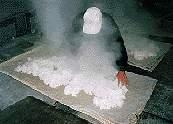 on sake brewing. Check it out at www.nanbubijin.co.jp. Also, Ninohe City, beyond being blessed with an abundance of natural beauty, is also rich in historical assets and anecdotes. You can learn more than you will ever need to know about Ninohe at
on sake brewing. Check it out at www.nanbubijin.co.jp. Also, Ninohe City, beyond being blessed with an abundance of natural beauty, is also rich in historical assets and anecdotes. You can learn more than you will ever need to know about Ninohe at
www.w-net.ne.jp/ninohe/ (again only Japanese). Should you travel to Ninohe, you can see the oldest sake vending machine in Japan, a Taisho Era (early 1900s) wooden box that sold free-running sake for 5 sen (half a yen). There was also a spigot for water for rinsing your cup. It is now in the Ninohe City Historical Folk Materials Museum.
♦ Toji (Master Brewer) ♦
 Our toji, Mr. Hajime Yamaguchi, is truly amazing. He has been with us since 1964, more than a quarter of a century. He has won countless awards from the tax department, as well as from the Nanbu toji association. In 1992, he was selected by the Ministry of Labor as one of the 100 Great Craftsmen. While fervently preserving traditions, he actively develops new technology and contributes much to the industry. Yet, he remains humble. “No matter how long I make sake, I am clueless about brewing. In the end, it is a matter of understanding the relationship between the water and the rice, and it is difficult to try and grasp the infinite variations between them.” Sake is born of the experience and efforts of the toji, and their love for the sake they brew. We are proud and privileged to have such a skilled and intuitive toji with us.
Our toji, Mr. Hajime Yamaguchi, is truly amazing. He has been with us since 1964, more than a quarter of a century. He has won countless awards from the tax department, as well as from the Nanbu toji association. In 1992, he was selected by the Ministry of Labor as one of the 100 Great Craftsmen. While fervently preserving traditions, he actively develops new technology and contributes much to the industry. Yet, he remains humble. “No matter how long I make sake, I am clueless about brewing. In the end, it is a matter of understanding the relationship between the water and the rice, and it is difficult to try and grasp the infinite variations between them.” Sake is born of the experience and efforts of the toji, and their love for the sake they brew. We are proud and privileged to have such a skilled and intuitive toji with us.
………………………………………………………………………………………………………………………………………………………………………
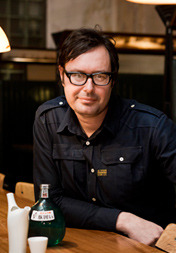 Andre Bishop is a Melbourne based Sake Professional and is recognized as one of Australia’s leading authorities on Sake. His 12 years of experience in designing Asian and specifically Japanese venues include well know Melbourne establishments Robot Bar and Golden Monkey. He currently owns the 22 year old Japanese dining institution Izakaya Chuji and Sake Bar Nihonshu. He is also co-owner and founder of Melbourne’s flagship Izakaya and Sake Bar, Kumo in Brunswick East. Andre studied Sake in Japan and is the only Australian who currently holds a Level 2 Sake Professional Certificate from the International Sake Education Council.
Andre Bishop is a Melbourne based Sake Professional and is recognized as one of Australia’s leading authorities on Sake. His 12 years of experience in designing Asian and specifically Japanese venues include well know Melbourne establishments Robot Bar and Golden Monkey. He currently owns the 22 year old Japanese dining institution Izakaya Chuji and Sake Bar Nihonshu. He is also co-owner and founder of Melbourne’s flagship Izakaya and Sake Bar, Kumo in Brunswick East. Andre studied Sake in Japan and is the only Australian who currently holds a Level 2 Sake Professional Certificate from the International Sake Education Council.
Andre is available for Consulting on Sake, Japanese Beverage Lists, Sake Staff Training and Sake Equipment. Contact: andrebishopsan@gmail.com
Sake Master Andre’s blog: www.sakemaster.com.au
Twitter: sakemasterandre
Sipping with the Sake Master #12
Sipping with the Sake Master #11
Sipping with the Sake Master #10
Sipping with the Sake Master #9
Sipping with the Sake Master #8
Sipping with the Sake Master #7
Sipping with the Sake Master #6.2
Sipping with the Sake Master #6.1
Sipping with the Sake Master #5.2
Sipping with the Sake Master #5.1
Sipping with the Sake Master #4
Sipping with the Sake Master #3
Sipping with the Sake Master #2
Sipping with the Sake Master #1
Please click here for Sake Master Andre Bishop’s older interview



